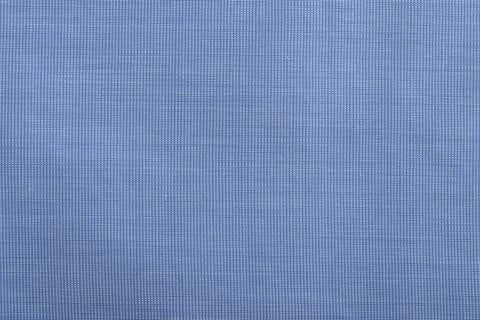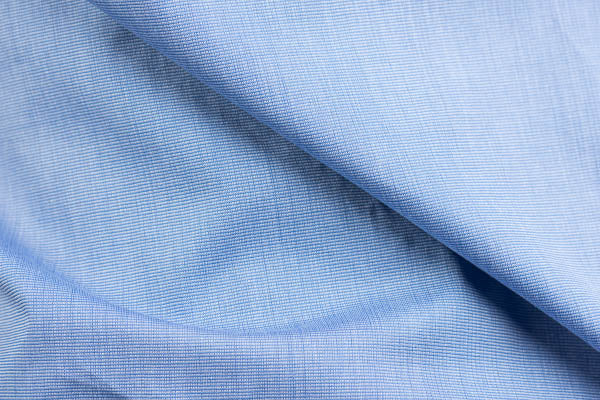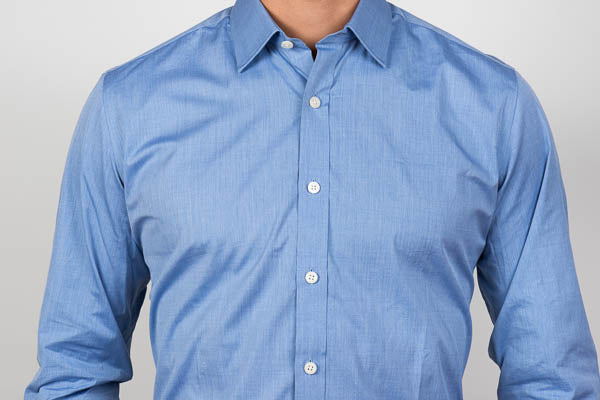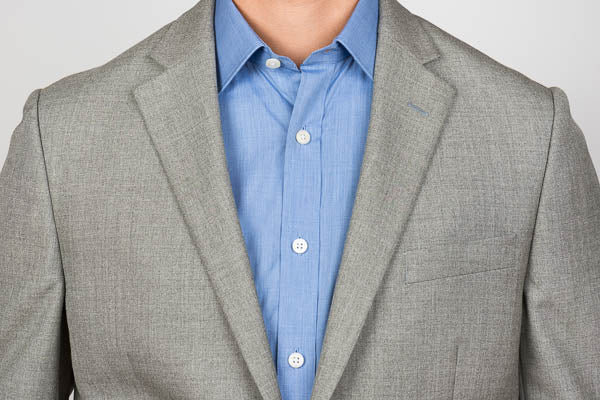A Primer On End-on-end Weave
In Subtle Contrast

An end-on-end fabric is the result of a one-to-one square weave, which produces a smooth, light fabric, that is similar in both feel and appearance to a poplin. The primary difference between the two is that an end-on-end fabric alternates light and dark warp and weft threads, giving it a subtle, heathered effect.
The term itself is derived from the French fil-a-fil, which translates as thread-to-thread, and the fabric is mostly commonly made using cotton or linen. Usually, the colored thread is contrasted with a white thread to create a barely detectable checked appearance, though some textile manufacturers opt for a second color or even insert a very fine stripe into the weave for a different kind of visual depth.
End-on-end fabrics are used almost exclusively for shirt making, and one variation that is particularly popular is Chambray, which is differentiated from end-on-end only by its finishing process of glazing or calendaring which gives it a distinctive sheen.
At Hugh & Crye, all our end-on-end fabrics are made of 100% Egyptian cotton.
Examples of End-on-end Weave Shirts

Look Closely
A colored thread is often combined with a white (or other colored) thread to create a very subtle contrast.

Ideal for Dress Shirts
The slightly heathered effect, the lightness of the weave and the softness to the touch make a beautiful dress shirt.

With a Finishing Touch
Paired with a fitted blazer, the texture of an end-on-end shirt can make a shirt really stand out against other fabrics.